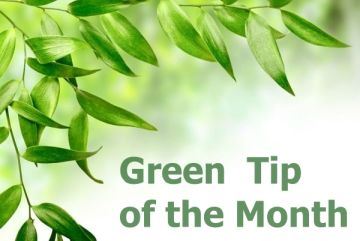
Peat-Free Gardening

Moorland peat is made up of layers of dead vegetation which has only partially decayed under the anaerobic conditions (no oxygen) present in the wet terrain. The layers build up very slowly over thousands of years and lock in huge amounts of carbon in the process. In fact, peatlands are considered to be the best carbon sinks on Earth, absorbing carbon more efficiently than trees.
Peatlands are valuable for other reasons too. Spongy moorland plants, such as sphagnum moss, are not only involved in peat formation but, like peat, retain large quantities of water and are important in flood prevention. Peatlands also provide a wildlife habitat for many species.
Peat has been cut for hundreds of years, initially from moorlands to dry and burn as a fuel, but increasingly from lowland peat areas for use in gardens, as a soil improver, as a potting compost and for mulching - and commercially on a large scale for growing mushrooms. It is undoubtably good at these tasks, but peat-cutting not only degrades the landscape but releases large quantities of carbon dioxide into the atmosphere. Moreover, it takes at least 1000 years to restore a metre-depth of peat, so, although you can argue that it is a renewable resource, it is not renewable on a useful timescale. We need to recognise the huge benefits of peat in the ground and leave it where it belongs.
Garden experts, writers and organisations such as the National Trust (NT) and the Royal Horticultural Society (RHS) have been trying to persuade people to switch to peat-free growing media - for example, NT gardens have been peat-free since 2001. Bradford Metropolitan District Council (BMDC) have not used peat-based products for many years, so all the Ilkley flower beds are peat free. BMDC also require firms who supply them with plants to use peat-free growing media.
Yet most bags of potting compost available for sale in many garden centres still contain at least some peat, including John Innes products. It is important to be picky at garden centres and make a point of asking about the compost on sale and about the growing media used for their plants. The example below is chosen because it is available locally and is relatively cheap - it's a step in the right direction but not necessarily the best to use. It dries out quickly but benefits from adding some soil or home-made compost.
There are good alternatives to peat based on a variety of substances. See for example:
https://www.gardenersworld.com/plants/alternatives-to-peat/
If you can't find what you want, do try on-line.
Select or click here to see a comprehensive list of available alternatives that Anne Eady has compiled for Climate Action Ilkley. Note that not all peat-free composts are multi-purpose, so do check on the packaging. You may need to add soil, sand and/or fertiliser.
As a footnote, there is a reasonably sustainable way of using small quantities of a peat-based composting medium. Reservoir peat is obtained by filtering reservoir water sourced from peat moorland areas. This is peat that has been washed down and much of it would end up in water-treatment works. Below is a link to one supplier, Moorland Gold, (smaller quantities can be obtained from Suttons), and select or click here for an extract from a letter from Moorland Gold explaining in more detail how they source the peat.
https://moorlandgold.co.uk/alternative-peat/
Select or click here for previous Green Tips.
You are here >>>>> |
|